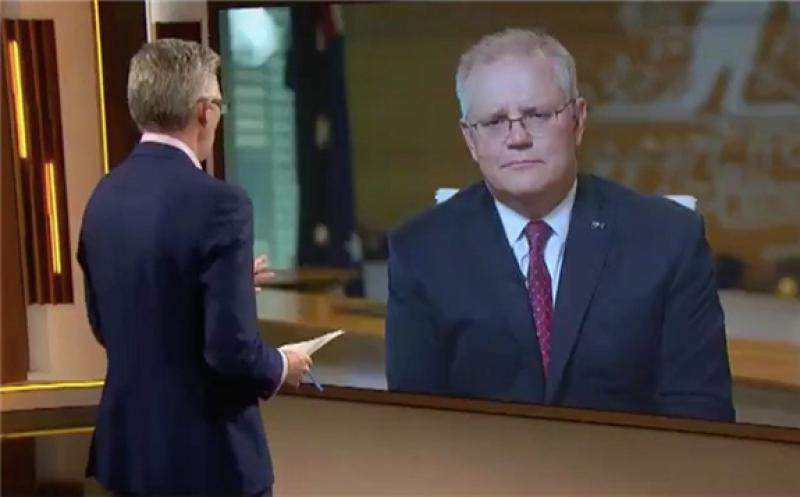It would be easy to describe Australia’s government as being backed into a corner on climate, but it’s not quite accurate. As the outcome of the US election solidifies, new net zero pledges for 2050-2060 keep on coming and even more countries begin closer considerations of new targets, it must seem to Australia’s federal leadership that the world is moving away from their own position very, very fast. While remembering that a pledge is far from real-life emissions reductions, the rising tide of market signals and symbolic movements from major players in climate around the world means many more questions to Australia’s leaders.

” How much longer can we shun the rest of the world like this and line up with outliers like Saudi Arabia?”, asked the ABC’s Fran Kelly, of Australia’s ‘Energy and Emissions Reductions’ Minister, Angus Taylor. “Well, as I said, the Paris Agreement requires net zero and we want it to happen as soon as possible. But the pathway is what counts, a technology pathway…”, Taylor repeatedly insisted. The government’s only major climate / energy policy, the “technology roadmap”, has been criticised as anything but: mostly a listing of potential technologies that fail to account for the need for rapid deployment of new technologies today, along with major social, political and economic change that lies outside of technological change.
What’s become clear is that this isn’t a corner the government is backed into: they’re actually being surrounded on all sides. Every single state and territory in Australia has established a net zero by 2050 target, and most importantly, these plans are beginning to manifest in policy changes that we can track, analyse and quantify, in terms of changes in the emissions footprint in each state.
Earlier this week, the NSW government announced a genuinely ambitious electricity infrastructure plan, laying down the guide rails for the construction of massive quantities of new wind and solar to replace aging coal-fired power stations. Based on the data made available, it’s certainly in the top end, if not the absolute top, of the grid operator’s various future scenarios, in terms of emissions reductions. The report this plan will result in 210 MTCO₂e fewer greenhouse gas emissions from 2020 to 2040, or around 10.5 MTCO₂e per year. Recently, Australia’s Clean Energy Regulator released a report that found the entire country’s renewable energy target (RET) scheme reduced total grid emissions by 32 MTCO₂e in 2019. As the RET winds up, the new engine of emissions reductions will be these ‘guide rails’ that enable the introduction of new renewables into grids on a massive scale.
Yesterday, Victoria announced a similar plan, albeit with less fanfare as the state already has a 50% by 2030 renewable energy target (the VRET). Like the NSW plan, the planning of new transmission takes precedence, as it is this particular requirement for large-scale penetration of renewables like wind and solar that is both the most expensive and most risky, for investors. Victoria’s long run of connection issues for renewables might be remedied under this outlook, with AEMO and the Victorian government seemingly very keen to work together to lay these guide rails in the state. Unlike the NSW announcement, this does not quantify additional emissions reductions that result from better planning and guidance, and it does not include targeted investment and state government, so the two are not directly comparable.
This is mostly because “much of the growing investor interest is being motivated by the Victorian Government’s VRET, which seeks to deliver 40% renewable energy generation by 2025, and 50% by 2030”, as AEMO write in their report. It highlights that the bulk of the challenges in Victoria lie around the siting of renewable energy zones, managing network congestion and targeting new distributed energy resources. The ‘supply’ of new renewables is already there, and meeting the required build for the VRET will almost be an afterthought. In fact, even in the AEMO ISP’s most pessimistic scenario, Victoria hits 50% renewables. What this planning work enables is a shift upwards to proportions far higher:
Other states will follow suite, over the coming months, with Queensland being the most obvious focus. It is already very clear that the best-case outcome for state governments is pre-emption, rather than stagnation. South Australia already has a net 100 per cent renewables target and is effectively aiming for 300 per cent target with its green hydrogen plans. Tasmania has a 200 per cent renewables target, also with an eye for green energy exports.
Tellingly, the only real objectors to NSW’ ‘energy infrastructure’ plan were large energy companies. “Given the interconnectedness of the power system, [Australian Energy Council CEO] Ms McNamara said energy reliability was best managed at a national level rather than state-by-state”, wrote the Sydney Morning Herald. It is a strange plea, given the most recent example of national level was the Prime Minister threatening to revenge-build a gas-fired power station, after badly botching grid reliability data several times in a row. Given the choice between that, and the genuinely good plans coming out of states in Australia right now, it’s clear that the imperfect state-level guidance of the energy transition is far better than farcical and misdirected federal interventions.
Back when the renewable energy target was the last climate policy left standing, after the destructive Abbott era, it was criticised for being an ‘inefficient’ way of reducing emissions by utilities and incumbents. That too ignored the context: the federal leadership is the cause of that inefficiency, because they’ve destroyed the most efficient policy options. Like that debate, those arguments will fail, and the imperfect pathway to zero emissions will be the one we’re forced to tread. The federal government is now more exposed than ever – surrounded on all sides, even by their party colleagues at a state level. The only question now is how long they can hold out, while the world and Australia’s states race ahead and leave them in the dust.